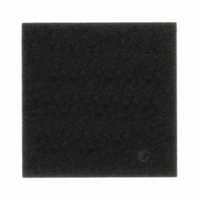L6924D STMicroelectronics, L6924D Datasheet - Page 15

L6924D
Manufacturer Part Number
L6924D
Description
IC BATTERY CHARGER SYS 16-VFQFPN
Manufacturer
STMicroelectronics
Datasheet
1.L6924D013TR.pdf
(38 pages)
Specifications of L6924D
Function
Charge Management
Battery Type
Lithium-Ion (Li-Ion), Lithium-Polymer (Li-Pol)
Voltage - Supply
2.5 V ~ 12 V
Operating Temperature
-40°C ~ 125°C
Mounting Type
Surface Mount
Package / Case
16-VFQFN
Product
Charge Management
Output Current
30 mA
Operating Supply Voltage
2.5 V to 12 V
Maximum Operating Temperature
+ 125 C
Minimum Operating Temperature
- 40 C
Mounting Style
SMD/SMT
For Use With
497-8428 - BOARD EVAL CHARGER ST7260/L6924D497-8247 - BOARD EVAL FOR L6924UTR497-5504 - EVAL BOARD FOR L6924D
Lead Free Status / RoHS Status
Lead free / RoHS Compliant
Available stocks
Company
Part Number
Manufacturer
Quantity
Price
Company:
Part Number:
L6924D013TR
Manufacturer:
ST
Quantity:
2 100
Company:
Part Number:
L6924D013TR
Manufacturer:
st
Quantity:
1 950
Company:
Part Number:
L6924D013TR
Manufacturer:
STMicroelectronics
Quantity:
10 000
L6924D
Where,
I
The difference between the set charge current and the adapter limit should be high enough
to minimize the R
completely unbalanced and the power element is fully turned on.
Figure 8
adapter current limit of 500 mA.
Figure 8.
Neglecting the voltage drop across the charger (ΔV
condition, its input voltage is equal to the battery one, and so a very low operating input
voltage (down to 2.5 V) is required. The power dissipated by the device during this phase is:
Equation 4
When the battery voltage approaches the final value, the charger gets back the control of
the current, reducing it. Due to this, the upstream adapter exits the current limit condition
and its output goes up to the regulated voltage V
dissipation:
Equation 5
In conclusion, the advantage of the linear charging approach is that the designer has the
direct control of the charge current, and consequently the application can be very simple.
The drawback is the high power dissipation.
The advantage of the Quasi-Pulse charging method is that the power dissipated is
dramatically reduced. The drawback is that a dedicated upstream adapter is required.
LIM
= current limit of the wall adapter, and R
shows the R
R
DS(on)
DS(on)
curves vs charging current and output voltage
DS(on)
value (and the power dissipation). This makes the control loop
values for different output voltage and charging currents for an
Doc ID 11908 Rev 9
P
DIS
P
CH
=
(
=
V
ADP
R
DS
DS(on)
−
(
on
V
)
ADP
BAT
×
= resistance of the power MOSFET.
MOS
I
. This is the worst case in power
)
LIM
×
) when the device operates in this
I
2
LIM
Operation description
15/38













